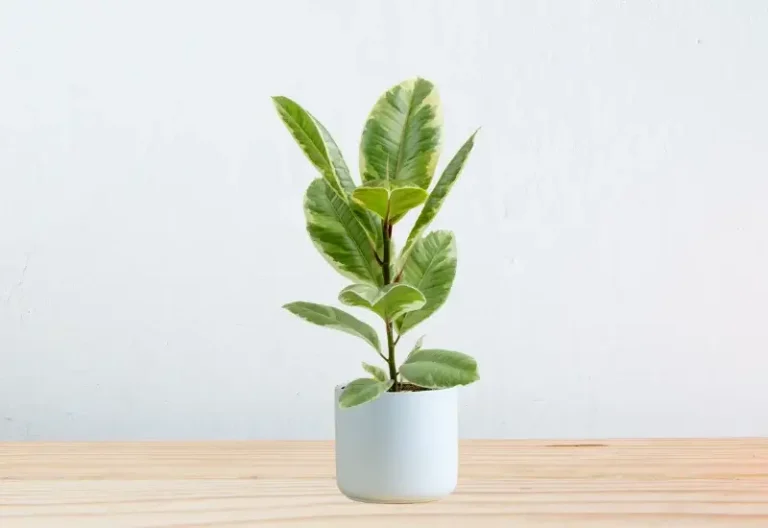Is Ficus Tineke Toxic to Cats?
Our pets, particularly cats, bring joy and comfort to our homes. As responsible pet owners, it’s our duty to ensure their safety in every aspect of their environment, including the plants we keep indoors, like the lovely Ficus Tineke.
The Importance of Pet Safety
Pet safety is a top priority for every loving pet owner. Our furry friends rely on us to create a safe and nurturing home environment. This includes protecting them from potential dangers, like toxic plants. Houseplants, such as Ficus Tineke, can be a source of beauty in our homes but may also pose risks to our pets if we’re not cautious.
Is Ficus Tineke Toxic to Cats?
Ficus Tineke is a breathtaking plant, but it contains compounds that can be harmful to cats. It’s crucial to understand the specific toxins in the plant and their potential dangers to our feline companions.
Exploring Harmful Compounds
Ficus Tineke contains substances that can lead to gastrointestinal issues, such as vomiting and diarrhea, in cats. These compounds are especially concentrated in the milky sap found in the plant. While they may not be lethal, they can certainly cause discomfort and distress to our beloved pets.
Symptoms and Risks
If a curious cat ingests Ficus Tineke, it may exhibit symptoms like excessive salivation, lethargy, and changes in behavior. The risk of ingestion is concerning, especially if you’re unsure about your cat’s reaction to the plant.
Is Ficus Tineke Toxic to Dogs?
While Ficus Tineke is primarily known for its effects on cats, it’s still essential to recognize its potential toxicity to dogs. While dogs are generally less susceptible, it’s not a guarantee of safety.
Understanding Reactions
Dogs may react differently to Ficus Tineke exposure compared to cats. They might display symptoms like drooling, pawing at their mouth, or mild stomach upset if they ingest the plant. However, the severity of these symptoms can vary, and in some cases, dogs might not show any signs of distress.
Differences in Susceptibility
The key difference between cats and dogs concerning Ficus Tineke toxicity lies in their susceptibility. Cats are typically more sensitive to the harmful compounds, making them more likely to react negatively.
Safety Measures for Pet Owners
Practical Tips and Precautions
As pet owners, it’s our responsibility to ensure a harmonious coexistence between our indoor plants, like Ficus Tineke, and our cats and dogs. Some practical safety measures include:
- Placing Ficus Tineke out of reach or in an area your pets cannot access.
- Monitoring your pets around plants and redirecting their attention to pet-safe toys.
- Training your pets to avoid plants through positive reinforcement techniques.
Creating a Safe Coexistence
With some thoughtful adjustments and precautions, you can create a safe environment where Ficus Tineke and your pets can coexist peacefully.
Seeking Professional Guidance
If your pet shows signs of ingesting Ficus Tineke or any other potentially toxic plant, it’s crucial to seek professional guidance. Veterinarians are experts in assessing and treating potential plant toxicity, and their timely intervention can make a significant difference in your pet’s well-being.
Promoting Responsible Pet Ownership
Above all, being a responsible pet owner means being proactive in ensuring your pets’ safety and well-being. This extends to their interaction with houseplants. Educating yourself about pet-friendly plants and practicing awareness can help create a secure environment.
The Role of Education and Awareness
Promoting responsible pet ownership involves educating yourself and raising awareness among fellow pet owners. Share your knowledge about pet-safe plants and the potential dangers of toxic ones, like Ficus Tineke. By doing so, you’re contributing to a safer and happier living environment for pets and their owners.
Conclusion
Pets bring immeasurable joy into our lives, and their safety is paramount. Ficus Tineke, as lovely as it is, should be approached with care and consideration for our feline and canine friends. By understanding potential risks, taking safety measures, and seeking professional help when needed, we can create a secure haven for our beloved pets. Responsible pet ownership also involves sharing knowledge and promoting awareness within the pet-loving community, ensuring that all our furry companions can thrive in a safe and loving home.


